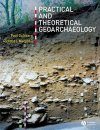![Practical and Theoretical Geoarchaeology Practical and Theoretical Geoarchaeology]()
Click to have a closer look
About this book
Contents
Biography
Related titles
About this book
Practical and Theoretical Geoarchaeology provides an invaluable overview of geoarchaeology and how it can be used effectively in the study of archaeological sites and contexts. Taking a pragmatic and functional approach, this book presents a fundamental, broad-based perspective of the essentials of modern geoarchaeology in order to demonstrate the breadth of the approaches and the depth of the problems that it can tackle. This book reflects the rapid advances made in the discipline in recent years, but also gives the reader a firm grasp of conventional approaches. It covers traditional topics with the emphasis on landscapes, as well as anthropogenic site formation processes and their investigation. It also provides guidelines for the presentation of field and laboratory methods and the reporting of geoarchaeological results. Practical and Theoretical Geoarchaeology is essential reading for archaeology undergraduate and graduate students, practicing archaeologists and geoscientists who need to understand and apply geoarchaeological methodologies.
Contents
PrefaceAcknowledgmentsIntroductionPart I Traditional Geoarchaeology1. Sediments2. Stratigraphy3. Soils4. Hydrological Systems I: Slopes and Slope Deposits5. Hydrological Systems II: rivers, Lakes, and Wetland6. Aeolian settings and Geoarchaeological Environments7. Coasts8. Caves and RocksheltersPart II Nontraditional Geoarchaeological Approaches9. Human Impact on Landscape: Forest Clearance, Soil Modifications, and Cultivation10. Occupation Deposits I: Concepts and Aspects of Cultural Deposits11. Occupation Deposits II: Examples from the Near East, North America, and Europe12. Experimental Archaeology13. Human Materials14. Applications of Geoarchaeology to Forensic SciencePart III Field and Laboratory Methods, Data, and Reporting15. Field-based Methods16. Laboratory Techniques17. Reporting and Publishing18. Concluding Remarks and the Geoarchaeological FutureAppendicesReferencesIndex
Customer Reviews
Biography
Paul Goldberg is a geologist and Professor in the Department of Archaeology, Boston University. He has carried out geoarchaeological research ranging from Quaternary landscapes and associated archaeological sites in the Near East, California, and Texas, to cave sediments in China, South Africa, Europe, and the USA. Richard I. Macphail is a Senior Research Fellow atUniversity College London, investigating archaeological sediments, soils, and occupation deposits across Europe and the USA. He was a researcher for English Heritage for 20 years, and is currently a Research Fellow at Boston University and was professor invite at Universite de Tours.



































